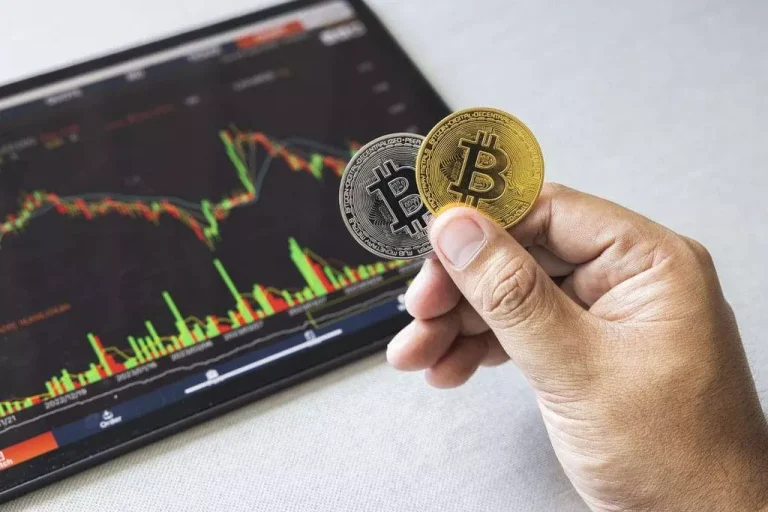Content
Their trades typically gather around crucial price levels, awaiting breakout moments to direct the market’s trajectory. Through their actions, institutions can amplify Forex market dynamics, moving prices with their large-volume orders. Buy side liquidity providers are the juggernauts of the Forex marketplace, consisting of investment banks, pension funds, mutual funds, and other large institutional investors. These entities possess the capital clout and the market acumen to navigate vast oceans of orders, discreetly aligning their trading strategies with existing liquidity to shift market currents. The infrastructure of market liquidity is comprised of resting orders, which represent the queued buy and sell orders at various https://www.xcritical.com/ price levels ready to be executed.
Identification of Valid Pullback in trading – SMC & ICT trading concept
In contrast, a thin liquidity layer can preface a volatile market reaction, amplifying the effects of trade orders on currency value. The intersection of buy side trading and liquidity provision is a dynamic that beckons skilled traders to attune their strategies accordingly. Equity, Futures, Crypto and forex what is sell side liquidity trading contains substantial risk and is not for every investor.
Types of Liquidity and Their Market Roles

The concepts of buy and sell side liquidity play an important role in financial markets. Liquidity refers to the ease with which assets can be purchased or sold, and identifying areas of strong liquidity can provide valuable insights into market behaviour. This article will define the buy and sell sides, explain the concept of liquidity, and explore how liquidity works in practice.
Fractal Trendlines And Broadening Range Patterns

In most cases, an optimal trade entry will lie somewhere between the 61.8% and 78.6% retracement of an expansion range. Often, a displacement will occur just after a liquidity level has been breached and will often result in the creation of both a Fair Value Gap and a Market Structure Shift. The price will always seek liquidity to either reverse or continue in the current move. Start your own brokerage with fully customisable solutions in just 2 weeks.
- Institutions requires large amount of liquidity to enter and exit positions.
- Sell side liquidity as defined by the Inner Circle Trader (ICT), refers to the accumulation of pending sell orders, particularly sell stop orders.
- Above the swing high or above top of ICT dealing range, the resting liquidity is referred to as buy side liquidity.
- With Bitcoin demand skyrocketing and sell-side liquidity falling, the liquid inventory of Bitcoin has plummeted to its lowest ever in terms of monthly demand.
- This approach was created by Michael J. Huddleston, an industry veteran with over 25 years of experience.
- When prices reach these buy side and sell side liquidity levels, a large number of orders are executed, leading to an imbalance in the market’s supply and demand.
- An awareness of structural liquidity allows traders to anticipate and possibly avoid traps set by major players, and also to recognize key moments when price momentum may accelerate.
Determinants of bid-ask spreads in the over-the-counter market
Displacement refers to the market’s movement away from an established price level. Low-probability order blocks may not always lead to substantial price movements, while high-probability order blocks are more likely to result in significant shifts. If the price rises above its perceived value, it enters a premium zone, indicating a potential selling opportunity. Liquidity zones refer to areas on the price chart with a high concentration of buy or sell orders. Michael J. Huddleston is a leading figure in trading education, known for his unique approach to understanding and mastering the markets. This article explains the details of this trading strategy, exploring its core concepts, trading methods, benefits, and drawbacks.
One of the limitations of hypothetical performance results is that they are generally prepared with the benefit of hindsight. In addition, hypothetical trading does not involve financial risk, and no hypothetical trading record can completely account for the impact of financial risk of actual trading. For example, the ability to withstand losses or to adhere to a particular trading program in spite of trading losses are material points which can also adversely affect actual trading results. As in the picture above you can see the equal highs which are termed as buy side liquidity. So buy stops rest above highs and that is why the old highs like weeks high ,days high or equal highs are termed as buy side liquidity.
This community serves as a dedicated space where ICT’s followers can connect, discuss, and learn from each other. We kindly remind all members to adhere to our community guidelines, help us maintain a friendly and inclusive environment where traders of all backgrounds can learn from one another. Sell side liquidity as defined by the Inner Circle Trader (ICT), refers to the accumulation of pending sell orders, particularly sell stop orders. After studying this article and practicing in the markets, you will be able to spot resting liquidity in the market like a pro.
A nuanced understanding of these differences is crucial for traders aiming to navigate the intricacies of Forex markets effectively. While many individual traders focus on technical indicators and chart patterns, understanding the underlying mechanics of the Forex market movement is crucial for those looking to gain an advantage. Particularly, the concept of buy side liquidity is a cornerstone in dissecting how large volumes and orders shape the market. Buy side trading activities, steered by prominent buy side liquidity providers, play a pivotal role in formulating the market’s direction and volatility. Buy-Side Liquidity refers to a pool of pending buy stop orders placed by traders above key highs (swing highs, resistance levels). These orders are targeted by institutional traders to generate liquidity for large sell orders, often leading to a price reversal after the buy stops are triggered.
These orders, especially when aggregated in large amounts, form a substantial liquidity pool. A liquidity sweep is a market move where price briefly surpasses a key level, such as equal highs or lows, to trigger stop-loss orders or breakout trades before reversing in the opposite direction. It occurs when the market seeks liquidity from retail traders before continuing or reversing a trend.
ICT traders focus on finding key levels where market participants are likely to place their stop orders in the futures market. This method focuses on understanding the market through the eyes of institutional traders, also known as “smart money.” ICT trading, short for Inner Circle Trader, is a strategy developed by Michael J. Huddleston that focuses on understanding the market from the perspective of institutional traders. Liquidity crisis on an individual basis are witnessed daily in crypto markets where asset issuers rug pull and remove all liquidity form their markets making their tokens worthless. This happening on decentralized exchanges (DEXes) that are not as traditional markets based on limit order-books, but on liquidity pools and a quote-based market. On more serious crypto asset markets, however, liquidity and liquidity shortages underly the same dynamics and causes as traditional public markets.
SMC and ICT traders wait for the price to pullback to the premium area (50% of the ICT Dealing Range). PD Array refers to key price levels like Order Blocks, Fair Value Gaps, or Imbalances zone. These zones are considered as attractive zone for entering sell positions.
Industry sources say that nearly all buy-side heads of trading are interested in experimenting with direct bilateral liquidity, but the actual volumes are still relatively small. Some believe that volumes will dramatically change when ELPs become more efficiently integrated into the buy side’s workflow. Referring to the trend, Canwell said that institutions can engage with market makers for executing small cash flow baskets (5% of average daily volume and below), as well as some larger trades (5%-20% of ADV).
These sell stops are typically positioned below key levels, such as the lows of the previous day, week, and month. Understanding these levels are crucial, as they indicate points where significant amounts of sell orders may trigger, leading to a potential market reversal. Buyside Liquidity (BSL) refers to the price levels where a large amount of pending buy orders are placed. These orders are placed by short sellers at their stop loss in order to close out their short positions.
In essence, the concept of sell side liquidity underscores the strategic interplay between traders and market makers, with sell stop orders serving as pivotal instruments in this dynamic process. Typically, traders position sell stop orders below significant price levels, such as historical lows, including weekly lows, daily lows, or equivalent benchmarks. And the market makers mostly try to hunt the liquidity of retail traders. Displacement, in short, is a very powerful move in price action resulting in strong selling or buying pressure.

 تا سه برابر شارژ هدیه بگیرید
تا سه برابر شارژ هدیه بگیرید